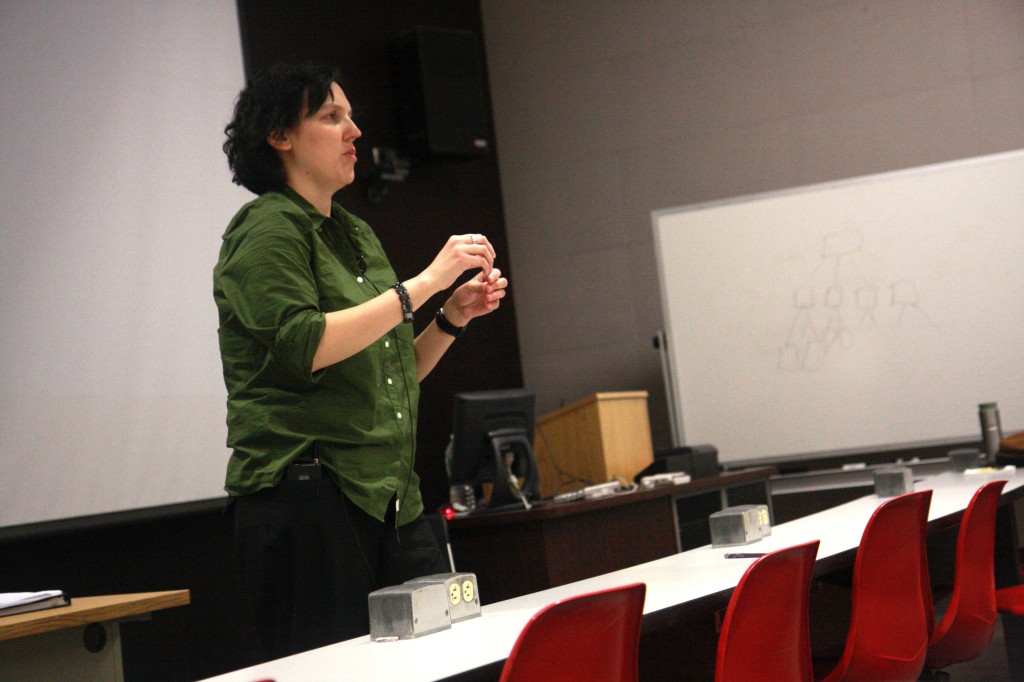
According to one evolutionary studies (EvoS) speaker, sexuality transcends labels, not just for individuals, but on an evolutionary level.
Sarah Radtke, a graduate student studying psychology at Ryerson University, shared the findings of her research on “sexual fluidity” in a talk Monday.
“Sexual fluidity is when self-identified heterosexual or predominantly heterosexual women experience short-term, fleeting, physical sexual attraction or a deeper emotional attraction with other women in a condition-dependent circumstance,” Radtke said.
Radtke ascribed sexual fluidity to “allomothering,” or non-maternal infant care. She said that a woman desires to build close relationships with other women to ensure extra support in raising her children. Oxytocin, a chemical released after sexual contact, causes these intimate bonds to form, Radtke said.
“Sexual fluidity can surprise women,” she said. “You can see your two friends who are straight and have boyfriends, and then all of a sudden they’re kissing.”
Radtke said that there can be a discrepancy between the sexuality with which women identify and the behaviors they exhibit.
“A straight woman would say she is straight, but would say that 35 percent of the time in the past year, she was sexually and emotionally attracted to women over men,” she said.
Radtke said she discovered that many more women than men exhibit gender fluid tendencies.
While several audience members suggested societal stigma as the cause, Radtke said she believes that allomothering is more likely. She cited spousal abuse, abandonment and death as triggers for a woman’s need to secure a backup mate.
“Females who befriend each other band together to raise offspring,” Radtke explained. “These women form a strong pair bond and work together to help each other survive.”
Radtke did, however, address the stigma surrounding gender fluidity. She cited the shame associated with experimentation as hindering gender fluidity’s widespread acceptance in both LGBTQ and heterosexual communities.
“There is so much hostility towards sexual fluidity saying, ‘This is fake. Why are these straight women faking this lesbian behavior?’ They get really pissed off about it. A heterosexual woman who kisses a woman is neither a lesbian, a bisexual or on the way to gay. She may be sexually fluid, and exploring a triggered behavior,” Radtke said.
Angelique Rivera, a senior majoring in psychology who attended the event, said that it created a space for students to discuss gender fluid LGBTQ feelings.
“This talk is geared toward heterosexual people and brings up homosexual feelings, so this makes people feel comfortable if they’ve had these same-sex feelings,” she said. “Most girls would insist they’re straight, feeling like they did something wrong by being sexually fluid, but this study shows that this is okay and this is natural and this applies to you. You don’t have to feel alienated.”
Radtke’s lecture, titled “Sexual Fluidity in Women: An Evolutionary Adaptive Trait,” was a part of the EvoS seminar series.


